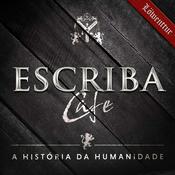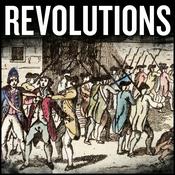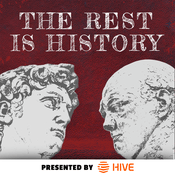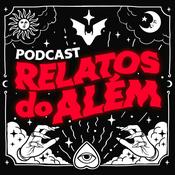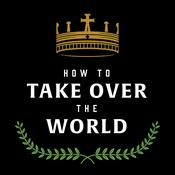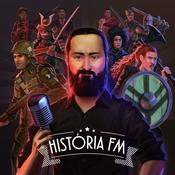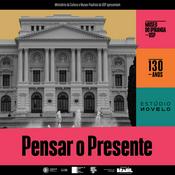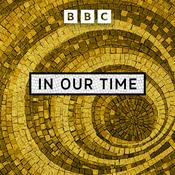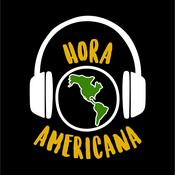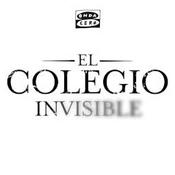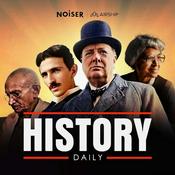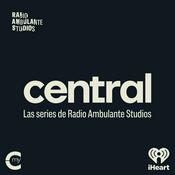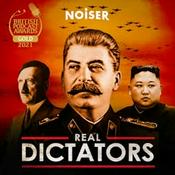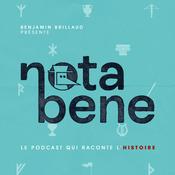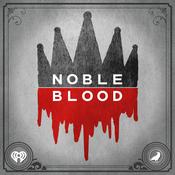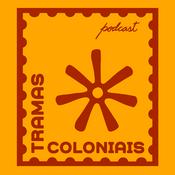26 episódios
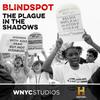
There Was Love Here
22/2/2024 | 38min
In this final episode, we turn to people living with HIV today — longtime survivors of a plague who, despite their pain, frustrations and desires to just be done with it, realize they can’t be done with it. These are people like Kia LaBeija, an artist born HIV-positive, who turned to photography at 16, a couple years after her mother died, to help make sense of her story. And they are people like Phill Wilson, an activist who still bears the scars of his decades fighting in the HIV and AIDS trenches; Valerie Reyes-Jimenez, the proudly positive woman we met in the first episode, who talks about what it’s like to age as a HIV-positive woman; Victor Reyes, one of the children who went through Harlem Hospital and lived long enough to grow up and start a family of his own; and Lizzette Rivera, who lost her mother to AIDS in 1984 and spent decades trying to find her mother’s burial spot so that she could properly mourn and honor her. Together, these five remind us that the HIV and AIDS epidemic is not over — and there is still so much we need to do to bring it out of the shadows.Voices in this episode include:• Kia LaBeija, a former mother of the House of LaBeija, is an image-maker and storyteller born and raised in Hell’s Kitchen in the heart of New York City. Her performative self-portraits embody memory and dream-like imagery to narrate complex stories at the intersections of womanhood, sexuality and navigating the world as an Afro Filipina living with HIV.• Warren Benbow is a drummer who has worked with Nina Simone, James “Blood” Ulmer, Betty Carter and Whitney Houston, among others. He grew up in Bed-Stuy, Brooklyn, and went to the High School of Performing Arts. Warren is Kia’s father.• Phill Wilson is the founder of the Black AIDS Institute, AIDS policy director for the city of Los Angeles at the height of the epidemic, and a celebrated AIDS activist in both the LGBTQ+ and Black communities since the early 1980s.• Valerie Reyes-Jimenez is a HIV-positive woman, activist and organizer with Housing Works. She saw the AIDS crisis develop from a nameless monster into a pandemic from her home on New York City’s Lower East Side.• Victor Reyes was born at Harlem Hospital Center and spent much of his childhood receiving treatment and care at the hospital’s pediatric AIDS unit. He is the director of an after school program at a grade school in Washington, D.C. He also does research at the Global Community Health Lab at Howard University.• Lizzette Rivera is a data analyst who remains haunted by her mother’s death in 1984. Rivera spent years trying to find the whereabouts of mother’s burial site on Hart Island. She finally succeeded in 2020. She now visits her mother’s grave regularly.Blindspot is a co-production of The HISTORY® Channel and WNYC Studios, in collaboration with The Nation Magazine.A companion photography exhibit by Kia LaBeija featuring portraits from the series is on view through March 11 at The Greene Space at WNYC. The photography for Blindspot was supported by a grant from the Economic Hardship Reporting Project, a nonprofit organization that promotes coverage of social inequality and economic justice.

What If I Could Have Grown Old With My Brother?
15/2/2024 | 39min
In 1985, doctors at a methadone clinic in the South Bronx made the harrowing discovery: 50 percent of its patients had HIV. Three years later, in the same neighborhood, a pair of epidemiologists estimated that as many as one in five young men were positive for the disease. Those numbers made the South Bronx one of most critical hotspots for HIV in the country.Joyce Rivera was born and raised in the South Bronx. She watched as heroin flooded into her neighborhood followed by HIV. When Rivera’s brother died in 1987, she decided to do something. Working with a heroin dealer and a local priest, she defied the law and set up an illegal needle exchange in an attempt to prevent the transmission of HIV among injection drug users. And she largely succeeded. But what if this country had treated drug addiction like a public health issue instead of a criminal problem?Voices in this episode include:• Don Des Jarlais has been a leader in the field of HIV and AIDS research among persons who inject drugs (PWID) for nearly 40 years. A professor of epidemiology at New York University, he served as the principal investigator of the “Risk Factors” study, which was instrumental in tracking the HIV and AIDS epidemic in New York City, among numerous others.• Sister Eileen Hogan was the first female chaplain in the Department of Correction in New York City.• Dr. Arye Rubinstein is an immunologist and allergist on the faculty at Albert Einstein Medical Center and Montefiore Medical Center. An early pioneer in AIDS research and treatment for children, he founded the pediatric AIDS center at Einstein in the early 1980s.• Joyce Rivera is the founder of St. Ann’s Corner of Harm Reduction, one of the first syringe-exchange programs in New York City. A National Science Foundation Fellow from 1981 to 1984, Rivera has been a leader in the field of AIDS and substance use for 35 years.• Father Luis Barrios is a priest and a professor of Latin American and Latinx studies and sociology at both John Jay College and the CUNY Graduate Center.• Robert Fullilove is associate dean for community and minority affairs at Columbia University’s Mailman School of Public Health, as well as a professor of clinical sociomedical sciences and the co-director of the Cities Research Group.Blindspot is a co-production of The HISTORY® Channel and WNYC Studios, in collaboration with The Nation Magazine.A companion photography exhibit by Kia LaBeija featuring portraits from the series is on view through March 11 at The Greene Space at WNYC. The photography for Blindspot was supported by a grant from the Economic Hardship Reporting Project, a nonprofit organization that promotes coverage of social inequality and economic justice.

Respectability Politics and the AIDS Crisis
08/2/2024 | 47min
By 1986, almost 40 percent of people diagnosed with AIDS in the United States were either Black or Latino. As the full contours of the crisis became apparent, a group of Black gay men began to organize in cities across the country, demanding attention and support for the people dying in their midst. This effort required them to confront big, important institutions in both the medical establishment and the government — and it meant they had to stare down racism in the broader LGBTQ+ community. But perhaps their most pressing and consequential challenge was the most difficult to name: the rejection of their own community.As men, women and children within the Black community began falling ill, essential institutions — the family, the church, civil rights groups — which had long stood powerfully against the most brutal injustices, remained silent or, worse, turned away. Why? What made so many shrink back at such a powerful moment of need? And what would it take to get them to step up?In this episode, we meet some of the people who pushed their families, ministers and politicians to reckon with the crisis in their midst. We hear the words of a writer and poet, still echoing powerfully through the decades, demanding that he and his dying friends be both seen and heard; and we spend time with a woman who picked up their call, ultimately founding one of the country’s first AIDS ministries. And we meet a legendary figure, Dr. Beny Primm, who, in spite of some of his own biases and blindspots, transformed into one of the era’s leading medical advocates for Black people with HIV and AIDs. Along the way, we learn how one community was able to change — and we ask, what might have been different if that change had come sooner?Voices in the episode:• George Bellinger grew up in Queens, New York. He’s been involved in activism since he was a teenager. He was an original board member of Gay Men of African Descent and also worked at GMHC and other HIV and AIDS organizations. He says his work is to “champion those who don’t always have a champion.”• Gil Gerald is a Black HIV and AIDS activist and writer, who co-founded the National Coalition of Black Lesbians and Gays.• Cathy Cohen is the author of “The Boundaries of Blackness: AIDS and the Breakdown of Black Politics,” which is considered a definitive history of the epidemic in Black communities.• Governor David Paterson is the former governor of New York State and a former state senator. He is the son of Basil Paterson, who served as state senator from Harlem in the late 1960s, secretary of New York State in the 1980s, and was a longtime member of Harlem’s political establishment.• Pernessa Seele is an immunologist and interfaith public health activist. She founded the Harlem Week of Prayer to End Aids and the Balm in Gilead.• Maxine Frere is a retired nurse who spent the entirety of her 40-year career at Harlem Hospital. A lifelong Harlem resident, she’s been a member of First AME Church: Bethel since she was a kid.• Dr. Beny Primm was a nationally recognized expert on drug addiction and substance abuse treatment. His work on addiction led him to becoming one of the world’s foremost experts on HIV and AIDS.• Dr. Lawrence Brown was Dr. Beny Primm’s protégé who worked as an internist at Harlem Hospital and at Dr. Primm’s Addiction Recovery and Treatment Center in Brooklyn. Brown served on the National Black Commission on AIDS, American Society of Addiction Medicine and took over for Dr. Primm as Director of ARTC (now START) when he retired.• Jeanine Primm-Jones is the daughter of Dr. Beny Primm, a pioneer of addiction treatment and recovery. Primm is a clinical social worker, abuse recovery specialist and wellness coach, who worked with her father for decades before his death in 2015.• Phill Wilson is the founder of the Black AIDS Institute, AIDS policy director for the city of Los Angeles at the height of the epidemic and a celebrated AIDS activist in both the LGBTQ+ and Black communities since the early 1980s.Audio from the 1986 American Public Health Association annual conference comes from APHA.Dr. Beny Primm archival audio comes from History Makers.This episode contains a brief mention of suicide. If you or someone you know is struggling with suicidal thoughts, there’s help available. The National Suicide Prevention Lifeline is open 24 hours a day by calling or texting 988. There’s also a live chat option on their website.Blindspot is a co-production of The HISTORY® Channel and WNYC Studios, in collaboration with The Nation Magazine.A companion photography exhibit by Kia LaBeija featuring portraits from the series is on view through March 11 at The Greene Space at WNYC. The photography for Blindspot was supported by a grant from the Economic Hardship Reporting Project, a nonprofit organization that promotes coverage of social inequality and economic justice.

'Women Don’t Get AIDS, They Just Die From It'
01/2/2024 | 44min
From the very earliest days of the epidemic, women got infected with HIV and died from AIDS — just like men. But from the earliest days, this undeniable fact was largely ignored — by the public, the government and even the medical establishment. The consequences of this blindspot were profound. Many women didn’t know they could get HIV.But in the late 1980s, something remarkable happened. At a maximum security prison in upstate New York, a group of women came together to fight the terror and stigma that was swirling in the prison as more and more women got sick with HIV and AIDS. Katrina Haslip was one of them. An observant Muslim and former sex worker, she helped found and create AIDS Counseling and Education (ACE), one of the country’s first HIV and AIDS organizations for women. And when she got out of prison, she kept up the work: she joined forces with women activists on the outside to be seen, heard and treated with dignity. This is her story — and the story of scores of women like her who fought to change the very definition of AIDS.Voices in this episode include:• Katrina Haslip was an AIDS activist who was born in Niagara Falls, New York. She spent five years at the Bedford Hills Correctional Center, during which time she served as a prison law librarian and helped found the organization AIDS Counseling and Education (ACE). After her release in 1990, she continued her advocacy through ACE-Out, an organization she formed to support women leaving prison, as well as ACT UP and other organizations.• Judith Clark spent 37 years in prison for her role in the October 1981 Brink’s robbery. In prison, she helped found AIDS Counseling and Education (ACE), along with other programs to support and counsel women. Since her release in 2019, she has continued to work on behalf of incarcerated and formerly incarcerated women.• Maxine Wolfe was a member of the women’s committee of ACT UP. Wolfe is an American author, scholar and activist for AIDS, civil rights, lesbian rights and reproductive rights. She is a co-founder of the Lesbian Avengers, a coordinator at the Lesbian Herstory Archives, and a member of Queer Nation. Wolfe is currently professor emerita of women's and gender studies at the Graduate Center, CUNY.• Terry McGovern is a lawyer and senior associate dean for academic and student affairs in the CUNY Graduate School of Public Health and Health Policy. In 1989, McGovern founded the HIV Law Project and served as the executive director until 1999. Her successful lawsuit against the Social Security Administration enabled scores of women with AIDS to receive government benefits.• Dr. Kathy Anastos is a professor at the Albert Einstein College of Medicine. Anastos’s work advances HIV and AIDS research and treatment, both globally and in the Bronx. She has been the principal investigator of the New York City/Bronx Consortium of the Women's Interagency HIV Study (WIHS) since it was launched in 1993.This episode title comes from a Gran Fury poster. Gran Fury was an artist collective that worked in collaboration with ACT UP and created public art in response to the HIV and AIDS epidemic.Resources: "The Invisible Epidemic: The Story of Women And AIDS" by Gena Corea.Blindspot is a co-production of The HISTORY® Channel and WNYC Studios, in collaboration with The Nation Magazine.A companion photography exhibit by Kia LaBeija featuring portraits from the series is on view through March 11 at The Greene Space at WNYC. The photography for Blindspot was supported by a grant from the Economic Hardship Reporting Project, a nonprofit organization that promotes coverage of social inequality and economic justice.

If I Didn't Have HIV, I Wouldn't Have Met You
25/1/2024 | 39min
It’s the 1980s — Harlem, USA — and the 17th floor of the area’s struggling public hospital is filling up with infants and children who arrive and then never leave. Some spend their whole lives on the pediatric ward, celebrating birthdays, first steps and first words with the nurses and doctors who’ve become their surrogate family. Welcome to Harlem Hospital at the height of the HIV and AIDS epidemics.When the nurses and doctors at this community hospital first began to see infants suffering from an unusual wasting disease, they were alarmed. They had heard that a strange new illness was killing gay men, but no one was talking about women and children. Soon, however, it became clear that HIV was sweeping through Harlem, sickening mothers who then passed it — unknowingly — to their kids. As the crisis grew, AIDS turned the pediatrics ward of Harlem Hospital into a makeshift home — and a makeshift family — for kids who were either too sick to go home, or who no longer had families to go home to.Voices in the episode include:• Dr. Margaret Heagarty was a doctor who ran the pediatric department at Harlem Hospital Center for nearly 20 years. She died in 2022. Archival interview with Margaret Heagarty comes from the Columbia Center for Oral History.• Dr. Stephen Nicholas was a pediatrician at Harlem Hospital Center for two decades.• Maxine Frere, a lifelong Harlem resident, is a retired nurse who spent the entirety of her 40-year career at Harlem Hospital Center.• Monica Digrado was a pediatric nurse at Harlem Hospital Center.• Victor Reyes was born at Harlem Hospital Center and spent much of his childhood receiving treatment and care at the hospital’s pediatric AIDS unit.Blindspot is a co-production of The HISTORY® Channel and WNYC Studios, in collaboration with The Nation Magazine.A companion photography exhibit by Kia LaBeija featuring portraits from the series is on view through March 11 at The Greene Space at WNYC. The photography for Blindspot was supported by a grant from the Economic Hardship Reporting Project, a nonprofit organization that promotes coverage of social inequality and economic justice.
Mais podcasts de História
Podcasts em tendência em História
Sobre Blindspot
Ouça Blindspot, Escriba Cafe - a história da humanidade e muitos outros podcasts de todo o mundo com o aplicativo o radio.net

Obtenha o aplicativo gratuito radio.net
- Guardar rádios e podcasts favoritos
- Transmissão via Wi-Fi ou Bluetooth
- Carplay & Android Audo compatìvel
- E ainda mais funções
Obtenha o aplicativo gratuito radio.net
- Guardar rádios e podcasts favoritos
- Transmissão via Wi-Fi ou Bluetooth
- Carplay & Android Audo compatìvel
- E ainda mais funções
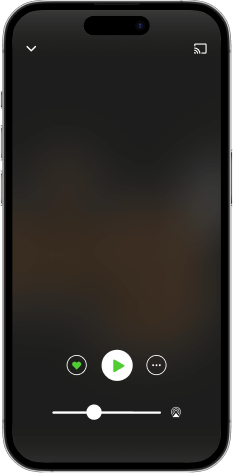

Blindspot
baixe o aplicativo,
ouça.
